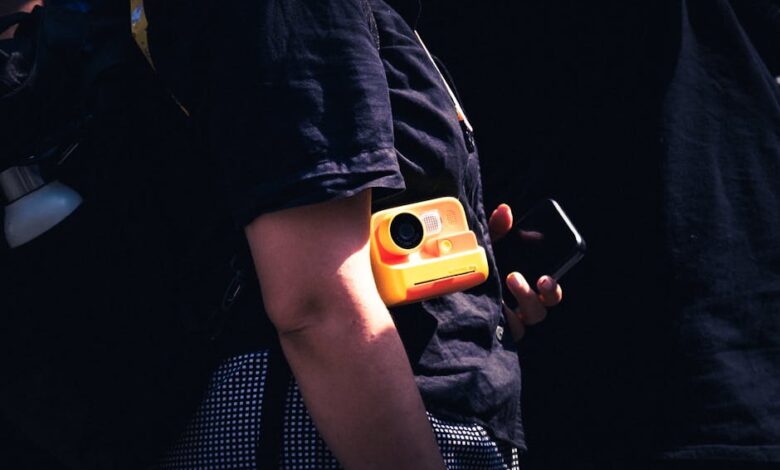The Growing Mobile Threat and the Training Imperative

In today’s hyper-connected world, our smartphones are more than just communication devices; they’re integral parts of our lives, holding a treasure trove of personal and professional data. But this convenience comes with a growing target on our backs. Mobile malware isn’t a niche threat anymore; it’s a surging tide, constantly evolving and becoming more sophisticated. Think about the countless apps we download, the links we tap, and the public Wi-Fi networks we join – each a potential entry point for a malicious actor.
For cybersecurity professionals and organizations, staying ahead of these threats is a constant battle. This is where cyber ranges come into play. These virtual environments are the ultimate proving grounds, allowing teams to simulate real-world attacks, practice defense strategies, and hone their skills in a safe, controlled space. Traditionally, these ranges have excelled at replicating network infrastructure and desktop systems. But when it comes to the mobile frontier, setting up realistic, scalable, and dynamic Android environments for training has been a significant hurdle. Imagine trying to simulate a targeted attack on a dozen different Android devices, each with unique configurations, all at once. The logistical nightmare alone is enough to make anyone sigh.
This is precisely the gap that innovative solutions like “Dockerized Android” aim to bridge. It’s not just about running an Android emulator; it’s about leveraging the power of containerization to build smarter, more flexible, and truly dynamic mobile virtual scenarios within existing cyber ranges. The goal? To empower cyber defenders with the tools they need to tackle the mobile threat landscape head-on, without the usual setup headaches.
The Growing Mobile Threat and the Training Imperative
Let’s face it: our reliance on mobile devices isn’t going anywhere. From banking apps to remote work tools, smartphones and tablets are central to our daily operations. Unfortunately, cybercriminals have caught on. Mobile malware, phishing attempts targeting mobile users, and exploits against operating system vulnerabilities are becoming increasingly prevalent and dangerous. We’ve seen sophisticated campaigns that steal credentials, spy on communications, and even hold devices for ransom.
The challenge for cybersecurity teams isn’t just knowing these threats exist; it’s understanding how they work in practice. How does a specific piece of Android malware propagate? What are the tell-tale signs of a targeted mobile phishing attack? How can an organization respond effectively when a zero-day exploit impacts its mobile fleet? Answering these questions requires hands-on experience, and that’s where traditional cyber ranges often hit their limits.
While desktop and network-focused ranges are invaluable, they often lack the robust, adaptable infrastructure needed to simulate complex mobile attack scenarios. Setting up individual Android emulators or physical devices for each training participant or scenario can be incredibly time-consuming, resource-intensive, and difficult to scale. You might manage a few, but what if you need to simulate an entire enterprise’s mobile device population being targeted? The complexity escalates exponentially. This highlights an urgent need for more streamlined and effective ways to integrate mobile components into our cybersecurity training and testing environments.
Dockerized Android: Bridging the Gap in Cyber Range Capabilities
Enter Dockerized Android, an ingenious platform designed to revolutionize how we build mobile virtual scenarios within cyber ranges. At its core, it takes the familiar concept of Android emulation and supercharges it with Docker, the container-based virtualization framework we all know and love for its efficiency and portability. Think of it as putting a fully functional Android device, running its own operating system and apps, inside a lightweight, easily deployable box.
The benefits of this approach for cyber range designers are substantial. Firstly, it offers unprecedented **scalability and speed**. Instead of manually configuring multiple virtual machines or physical devices, you can spin up dozens, even hundreds, of isolated Android environments in mere moments. Need to test a mobile app’s vulnerability across various Android versions? Done. Want to simulate a large-scale phishing campaign against a corporate mobile fleet? No problem. The ability to quickly deploy and tear down these environments drastically reduces setup time and maximizes training efficiency.
Secondly, **consistency and isolation** are key. Each Dockerized Android instance is a pristine, identical environment, ensuring that every participant in a training exercise faces the exact same conditions. This eliminates the “it works on my machine” conundrum and allows for precise control over the scenario’s parameters. Furthermore, the inherent isolation of Docker containers means that even if a simulated mobile malware attack goes awry, it’s confined to its container, posing no threat to the host system or other components of the cyber range. This makes it a perfect sandbox for high-risk experimentation and penetration testing.
Finally, the platform is designed for **extensibility and flexibility**. Through tools like a `docker-compose creator`, cyber range designers can dynamically enable or disable features and fine-tune configurations. Want to simulate a specific Android OS version, inject certain apps, or mimic unique network conditions? It’s all configurable, allowing for highly customized and realistic scenarios. The researchers even showcased its ability to create complex cyber kill-chain scenarios involving Bluetooth components – a feature that can be notoriously tricky to simulate accurately in virtual environments.
Practical Considerations and Future Horizons
While Dockerized Android brings significant advancements, it’s worth noting the practical considerations. The platform’s core strength lies in its ability to quickly run mobile components through Docker, offering many features “out of the box” and centralizing component management, which greatly enhances usability. However, some compatibility challenges remain, particularly with Windows and OS X as host operating systems when running the emulator core. For now, a Linux environment is strongly recommended to get the most out of the system, a common theme in advanced virtualization where direct hardware access or specific kernel features are beneficial.
Another current limitation is the lack of full support for emulating certain hardware components, like Bluetooth, which requires specific workarounds. This is a common challenge in virtualization, but one that is actively being addressed by the broader community and future iterations of such platforms. Despite these points, the vision for Dockerized Android is incredibly promising. The research points towards exciting future developments, including assessing its potential in cloud-based environments, which would unlock even greater scalability and accessibility.
Imagine integrating security features like GPS location simulation to mimic a user’s realistic travel route, adding another layer of realism to mobile attack scenarios. The integration with high-level Specification and Description Language (SDL) for cyber range configuration is also a clear pathway, leveraging Docker environment variables for seamless feature control. Perhaps most exciting is the focus on improving automation through an event-based architecture, allowing for the simulation of complex sequential actions that involve human interaction – a crucial element for training against social engineering and multi-stage attacks.
Empowering the Next Generation of Cyber Defenders
The evolution of cybersecurity training is directly tied to the realism and adaptability of our cyber ranges. As mobile devices continue to be a primary vector for cyber threats, the ability to effectively simulate, analyze, and defend against these attacks becomes paramount. Dockerized Android represents a significant leap forward, offering a robust, scalable, and flexible platform for integrating mobile virtual scenarios into existing cyber range infrastructures.
By leveraging the power of containerization, it removes many of the traditional barriers to creating realistic mobile training environments, allowing cybersecurity professionals to focus on honing their skills rather than grappling with complex setup procedures. While there are still challenges to overcome, the trajectory for Dockerized Android and similar innovations is clear: to build smarter, more comprehensive cyber ranges that can truly prepare us for the ever-changing landscape of cyber warfare. In a world increasingly defined by mobile interactions, ensuring our defenders are equally prepared to protect them isn’t just an advantage—it’s an absolute necessity.





